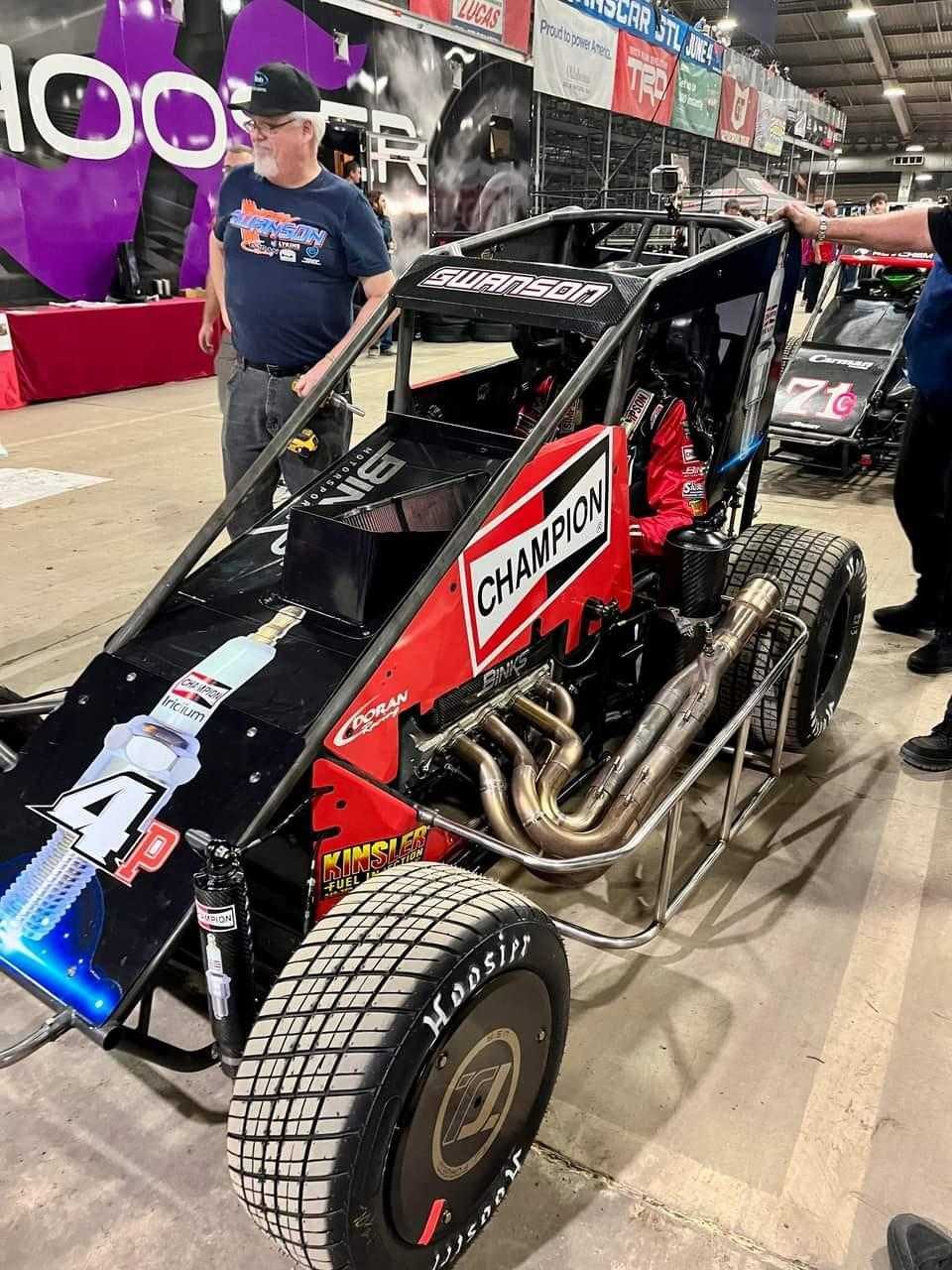Retired Corvette Racing chief Dan Binks goes dirt racing
For most, retirement means ditching the frenzied pace of a full-time job to relax, slow down, and enjoy the autumn stages of life. This is not the case for Dan Binks.
In 2020, after a 38-year career in sports car racing, the Michigan resident walked away from the sport that he had dominated for decades. Rather than slip into an easy chair or steal away to some tropical beach, Binks turned to circle track racing, building engines for sprint car and midget competition.
On paper, the move was unexpected. Throughout the 1980s and 1990s, Binks and his de facto driver Tommy Kendall were unstoppable, first with the Mazda RX-7 GTU program in IMSA and then the Roush Mustang team in Trans Am. The duo piled on the wins. Then, in 2002, after a brief stint in NASCAR, Binks began his tenure at Corvette Racing.
Over time, Binks became a face of the franchise. With buckets of bravado topped in a silver buzz cut, he sported just as much American spirit as the yellow Corvettes that he spun wrenches on. In his 18 years with the team, Binks and his team earned countless titles. Sebring and Daytona were personal playgrounds, and overseas the team racked up six victories at the 24 Hours of Le Mans.

After so much success delivering wins to teams that turn right and left, why circle track racing, and why now?
Binks grew up attending open-wheel dirt shows in California with his father. Visits to the long-gone Ascot Park specifically lit the fuse early on. “I loved dirt,” says Binks. “But my expertise came in road racing, so I went and did that.”
He never stopped following the sport, though, and vowed to return in his retirement. Of the countless dirt track races in a calendar year, one in particular stuck out. The Chili Bowl, an indoor dirt race in Tulsa, Oklahoma that could be considered the Daytona 500 of midget competition, was on Bink’s bucket list.
After he left sports car racing in 2020, he set to working building midget and sprint car engines using a warehouse full of parts he had purchased from Katech—the long-time engine component supplier for Corvette Racing. LS goodies including “seven or eight $10,000 crankshafts” that once propelled C5, C6, and C7 race cars to international dominance, now line Bink’s personal shelves.

To construct his four-cylinder midget engine for the Chili Bowl, Binks chopped an LS V-8 block in half, removing cylinders two, four, six, and eight. The end result was the lightest midget engine in the paddock. At last year’s Chili Bowl, Binks partnered with another car owner to debut his motor. The car was fast, but an accident ended the team’s run for indoor glory.
This January in Tulsa, Binks is back for more. And with another bullet in the chamber. Joining his formidable four-banger is an ultralight three-cylinder engine—the only creation of its kind. The novel powerplant is about 80 pounds lighter than a traditional midget engine. In the Chili Bowl, there is no minimum weight rule (or hardly any rules, really).

Rather than entrust his engines to another team, Binks brought his own equipment this year, snagging a couple of chassis from perennial front runners Clauson-Marshall Racing. “You can either learn the information over time or you can buy it,” says Binks “Right now, I’m buying it.” To help run the show, he brought in old road racing adversary Kevin Doran.
Like Binks, Doran won numerous times at Daytona’s Rolex 24, including twice as a crew chief, once as a team member, twice as a manager/owner, and once as a car manufacturer. More recently, Binks and Doran have collaborated in other open-wheel dirt and pavement circle track races. For these efforts, they employ future USAC Hall-of-Famer Kody Swanson as their driver.

At this year’s Chili Bowl, they tabbed Swanson for the four-cylinder midget and youngster Dairin Naida to drive the three-cylinder entry. Both drivers will try to best some 400 other competitors dueling inside Oklahoma’s largest clears pan building on a quarter-mile bullring.
The level of competition at the Chili Bowl is arguably higher than any sports car race. “I would be happy with the top 75,” says Binks. “If I got to the B-Main, I would be ecstatic.” The fact that he’s won Rolex watches and sipped champagne on Le Mans’ top step doesn’t’ dilute his drive for success in midget racing, and his determination to succeed in the discipline is palpable.
Forget the white sand, Binks would rather spend his retirement on the Oklahoma clay.

Check out the Hagerty Media homepage so you don’t miss a single story, or better yet, bookmark it.



I had the privilege to see Dan every year at Mid Ohio. He was always a gentleman and a great guy to talk to. He Also never said a word when I would slip into the garage to watch them work and gets some great photos of the Corvettes on the other side of the barrier.
He is one of the best mechanics and crew chief one could ever find. He also restores old race cars and even runs a camp for kids and a charity to support it.
Great guy!